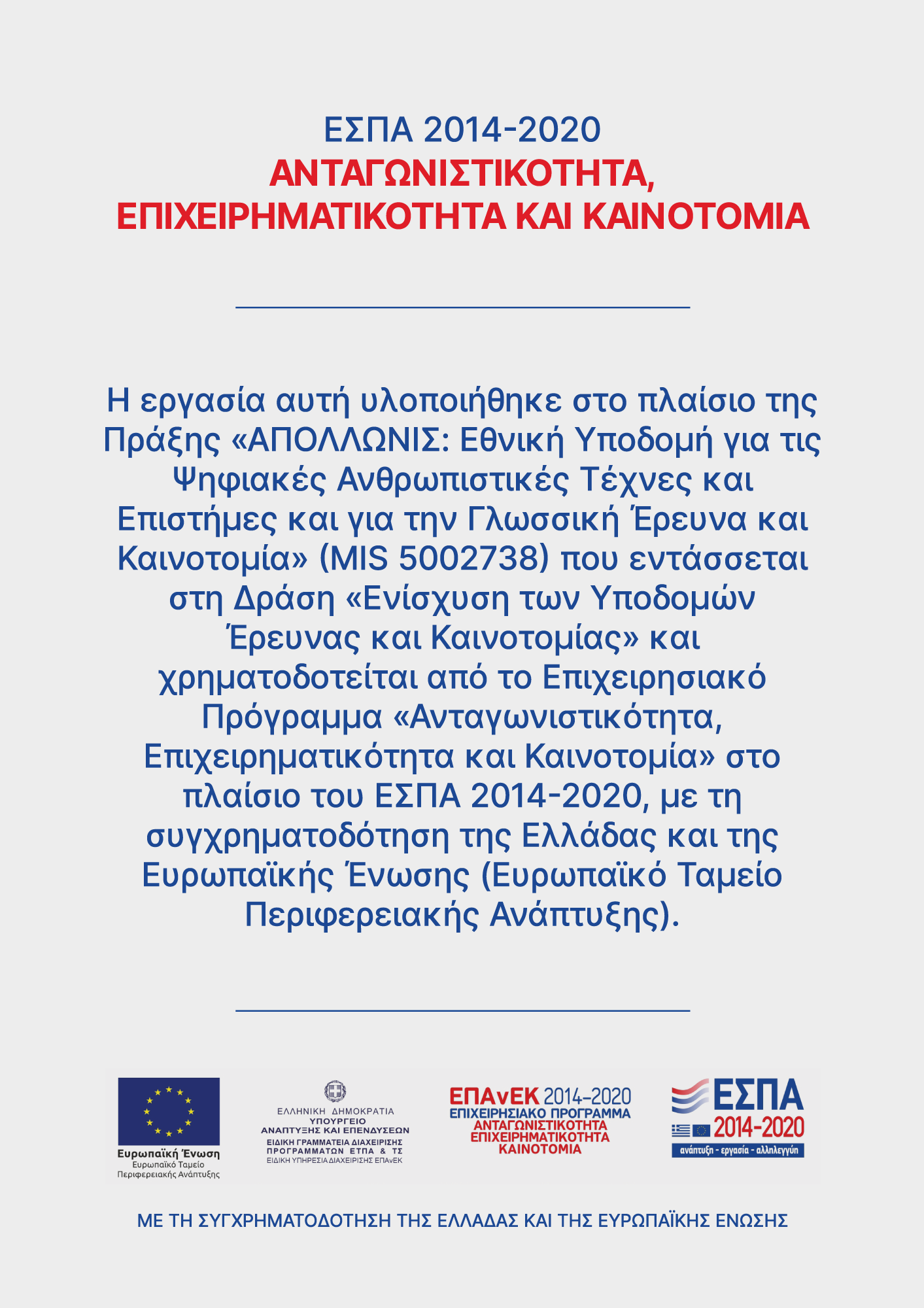Τα πρώτα τρία άρθρα αποτελούν μια συνολική θεώρηση της Digital Epigraphy και του Epidoc. Προτείνονται ως αρχικά αναγνώσματα για την εισαγωγή σας στο Epidoc.
H. Cayless, C.M. Roueché, et al. (2009), «Epigraphy in 2017» Digital Humanities Quarterly 3.1. Διαθέσιμο εδώ
Bodard, G and Stoyanova, S. (2016), «Epigraphers and Encoders: Strategies for Teaching and Learning Digital Epigraphy» In: Bodard, G & Romanello, M (eds.) Digital Classics Outside the Echo-Chamber: Teaching, Knowledge Exchange & Public Engagement, Pp. 51–68. London: Ubiquity Press. Διαθέσιμο εδώ
Bodard, G and Stoyanova, S. (2016), «Epigraphers and Encoders: Strategies for Teaching and Learning Digital Epigraphy» In: Bodard, G & Romanello, M (eds.) Digital Classics Outside the Echo-Chamber: Teaching, Knowledge Exchange & Public Engagement, Pp. 51–68. London: Ubiquity Press. Διαθέσιμο εδώ
Julia Flanders and Charlotte Roueché (2003), «Introduction for Epigraphers» Διαθέσιμο εδώ
Alison Babeu (2011), «Epigraphy», «Rome Wasn’t Digitized in a Day»: Building a Cyberinfrastructure for Digital Classicists Draft Version 1.3—11/18/10, pp. 73–89. CLIR: Washington. Διαθέσιμο εδώ
Laura Löser (2014), «Meeting the Needs of Today’s Audiences of Epigraphy with Digital Editions» In Orlandi, Santucci et al., Information Technologies for Epigraphy and Cultural Heritage. Proceedings of the First EAGLE International Conference. Rome. Διαθέσιμο εδώ
Joshua D. Sosin, «Digital Papyrology», Congress of the International Association of Papyrologists, 19 August 2010, Geneva. Διαθέσιμο εδώ
